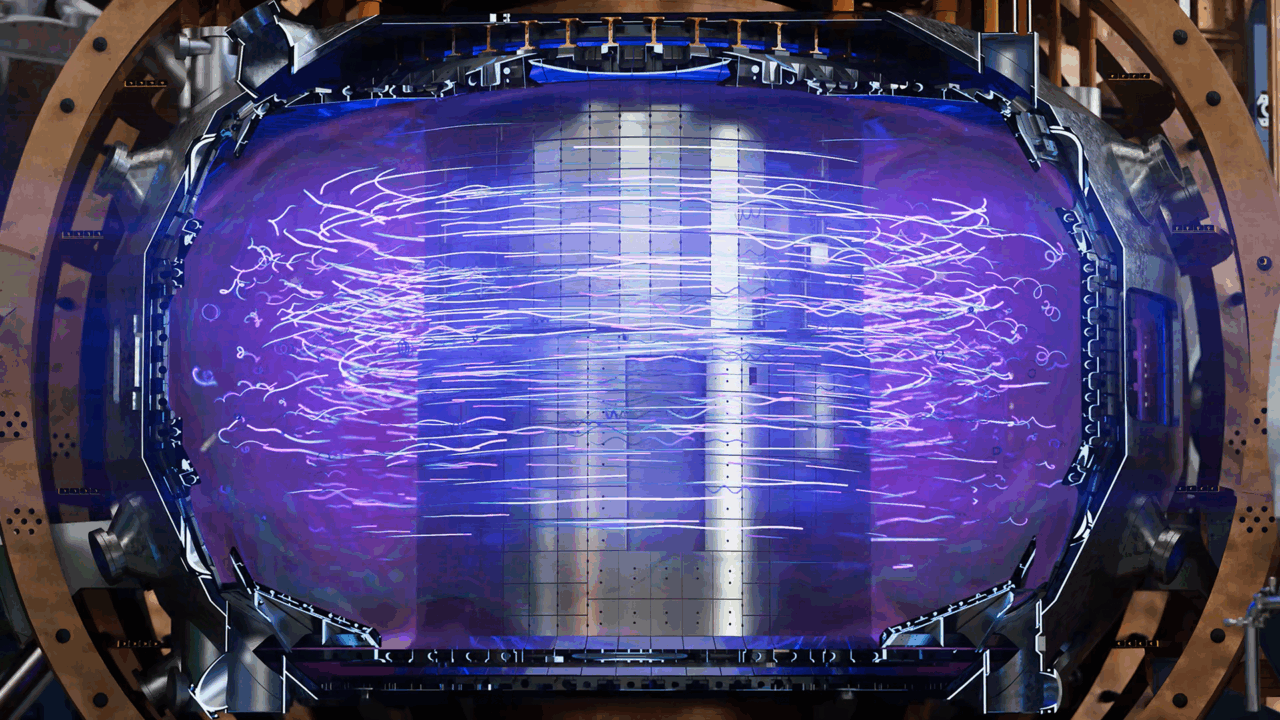The race to bottle a star now runs on AI.
NVIDIA, General Atomics and a team of international partners have built a high-fidelity, AI-enabled digital twin for a fusion reactor with interactive performance, with technical support from San Diego Supercomputer Center at UC San Diego School of Computing, Information and Data Sciences, the Argonne Leadership Computing Facility (ACLF) at Argonne National Laboratory and National Energy Research Scientific Computing Center (NERSC) at Lawrence Berkeley National Laboratory.
The effort, announced today at the NVIDIA GTC Washington, D.C., conference, used Polaris at the ALCF and Perlmutter at NERSC supercomputing systems to train three distinct AI surrogate models at scale.
This groundbreaking project uses the NVIDIA Omniverse platform, NVIDIA CUDA-X libraries and data center GPUs to help researchers tackle one of science’s toughest problems: making fusion energy work on Earth.
Here’s why this matters: fusion promises virtually limitless, clean energy by replicating the process that powers the sun.
“The ability to explore scenarios virtually through this interactive digital twin is a game-changer,” said Raffi Nazikian, fusion data science lead at General Atomics. “Working with NVIDIA, we can now test, refine and verify our ideas orders of magnitude faster, accelerating the path toward practical fusion energy.”
But controlling plasma at extreme temperatures — think hundreds of millions of degrees — and predicting its behavior fast enough to keep reactors running is a massive challenge.
Plasma is the fourth state of matter, a swirling soup of charged particles that behaves like a living thing. It’s what stars are made of.
In fusion reactors, plasma is the fuel — the stuff that, if tamed, could power cities with the energy of the sun. Imagine trying to bottle a star. That’s the metaphor fusion scientists love, and for good reason: it’s poetic and accurate.
That’s where AI comes in. By reducing simulation times from weeks to seconds, AI enables researchers to interact with the reactor virtually, exploring scenarios that may damage the reactor without risk, and accelerate the path to commercial fusion power.
At the forefront of this effort, General Atomics is developing an AI-enabled digital twin as part of their research at the US Department of Energy’s DIII-D National Fusion Facility to push fusion research forward.
AI: Turning Weeks to Seconds
Traditionally, simulating plasma behavior takes weeks on even the fastest supercomputers.
General Atomics is now using AI surrogate models — trained on decades of real-world data — to predict plasma behavior in seconds, all of which continue to be improved.
These models, including EFIT (for plasma equilibrium), CAKE (for plasma boundary) and ION ORB (for heat density of escaping ions), can help operators keep the plasma stable in real time, reducing the risk of damage and speeding up research.
Running on NVIDIA GPUs, these models deliver accurate predictions faster than physics-based simulations. They’re among the many models used to help simulate the behavior of fusion reactors and control them, which can be accelerated by AI.
The Digital Twin
NVIDIA and General Atomics are building a fully interactive digital twin of the DIII-D inside NVIDIA Omniverse, powered by NVIDIA RTX PRO Servers and NVIDIA DGX Spark, with supporting contributions from San Diego Supercomputer Center, ALCF and NERSC.
This virtual reactor dynamically fuses sensor data, physics-based simulations, engineering models and AI surrogate models — creating a unified, real-time interactive environment that can quickly inform decisions.
The digital twin is synchronized with the physical DIII-D, allowing the international team of 700 scientists from 100 different organizations to test ideas and run “what-if” scenarios without touching the real machine.
Key controls can be explored in the digital twin to refine the science before running real experiments, enabling rapid optimization and faster progress toward commercial fusion.
Why It Matters
This approach fundamentally shifts fusion research from a pure physics challenge to one also powered by computing and smart algorithms.
By moving from weeks-long simulations to near-real-time, interactive answers in seconds, the digital twin acts as a true “fusion accelerator” — a platform to rapidly test new ideas, optimize reactor designs and put commercial fusion energy on a faster track.
Learn more about how NVIDIA and partners are advancing AI innovation in the U.S. by watching the NVIDIA GTC Washington, D.C., keynote by Jensen Huang.
